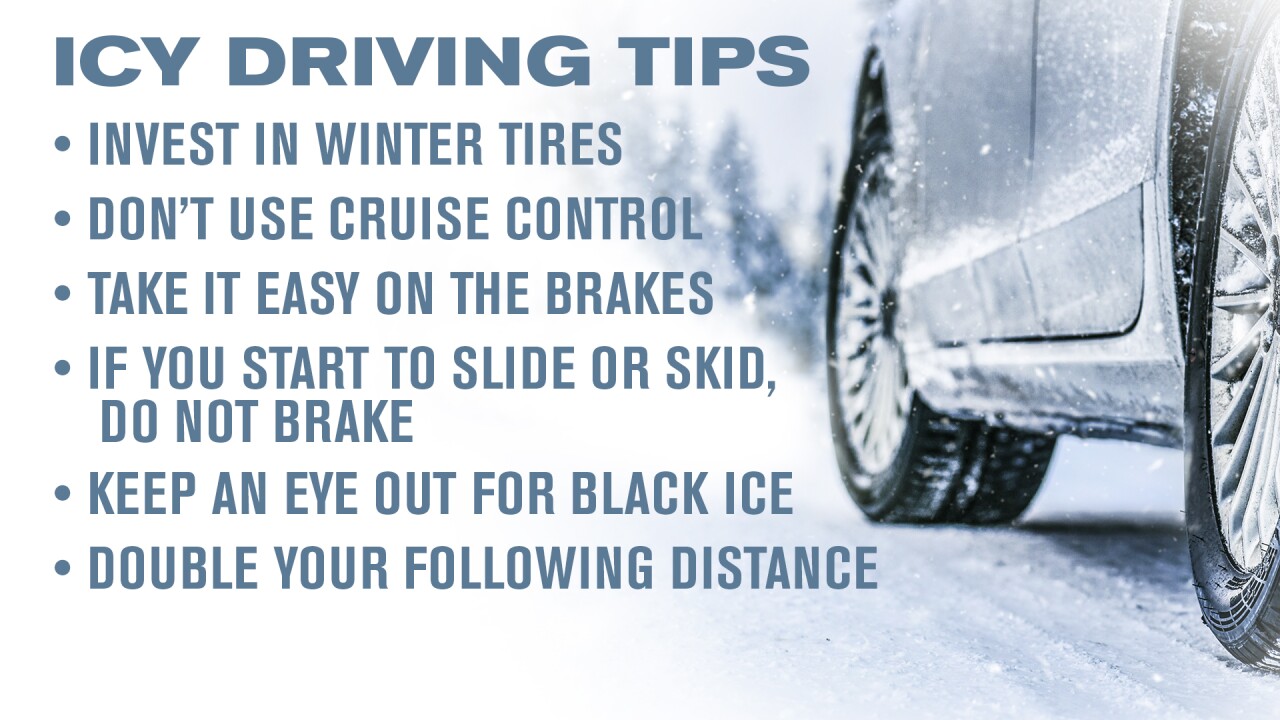When it comes to winter driving, winter tires are recommended. These tires have a deeper tread, and therefore provide a better grip in snowy or icy conditions. If winter tires aren't an option, make sure that the tread on your ties isn't worn out before hitting the road.

Avoid using cruise control and aim to keep your speed under 45 mph, even on the interstate.
Take it easy on the brakes. Hard braking can trigger a slide, so plan to brake well in advance of your stopping point.
If you start to slide or skid, slowly take your foot off the gas pedal and turn the steering wheel in the direction that you're sliding until you regain traction.
Keep an eye out for black ice, which tends to form on bridges and overpasses.
Lastly, you should plan to double your following distance.
The reason for increasing the gap between you and the car ahead of you is to account for the larger stopping distances that we see on snow and ice.
If you're traveling at a speed of 35 mph on dry pavement, it will take you 60 to 100 feet to come to a stop.
On snow packed streets, that distance can easily double depending on road conditions.
Stopping distances are even worse on icy streets, where a minimum distance of 600 feet is required.

The best advice is to take it slow and to keep plenty of space between you and the car in front of you whenever winter weather strikes.



